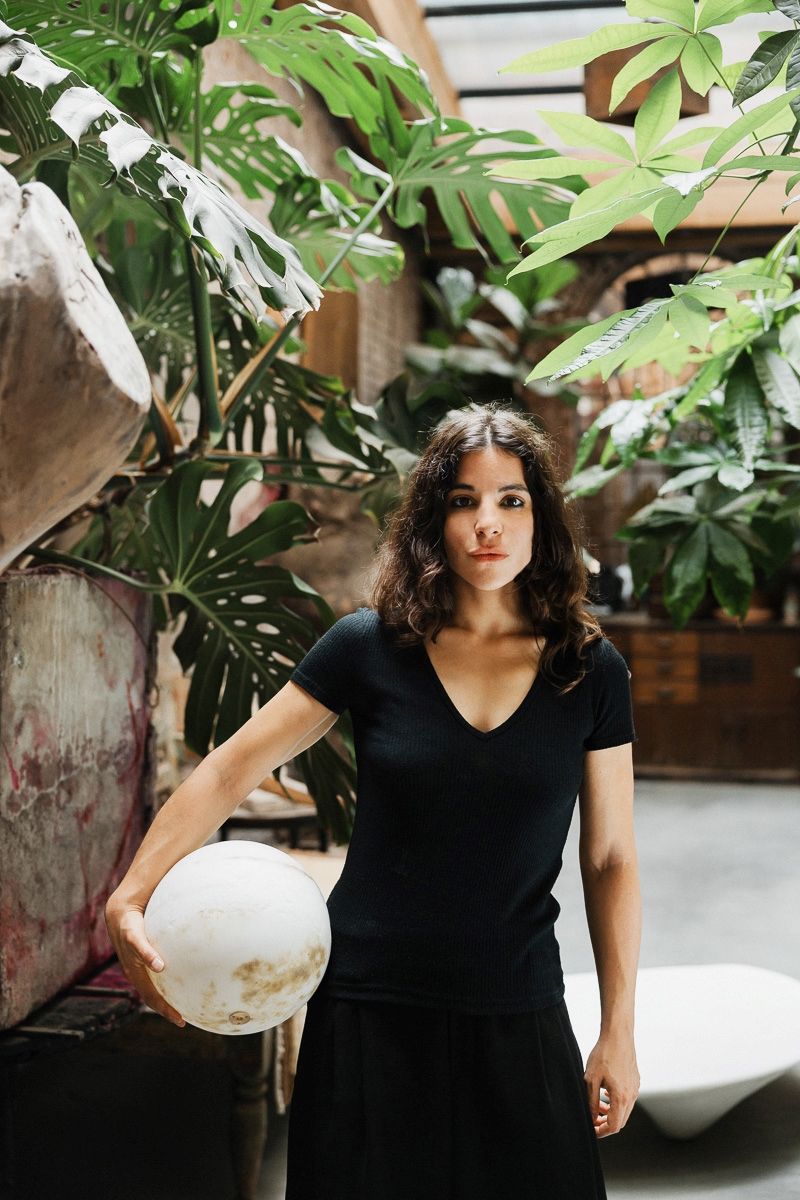A few days before the opening of her solo exhibition at the Augusta gallery in Brussels, we spoke with the founder of the studio Marbled Salts. Based in Brussels, Roxane Lahidji shared with us her vision of poetic and politically engaged design, halfway between art and craftsmanship.
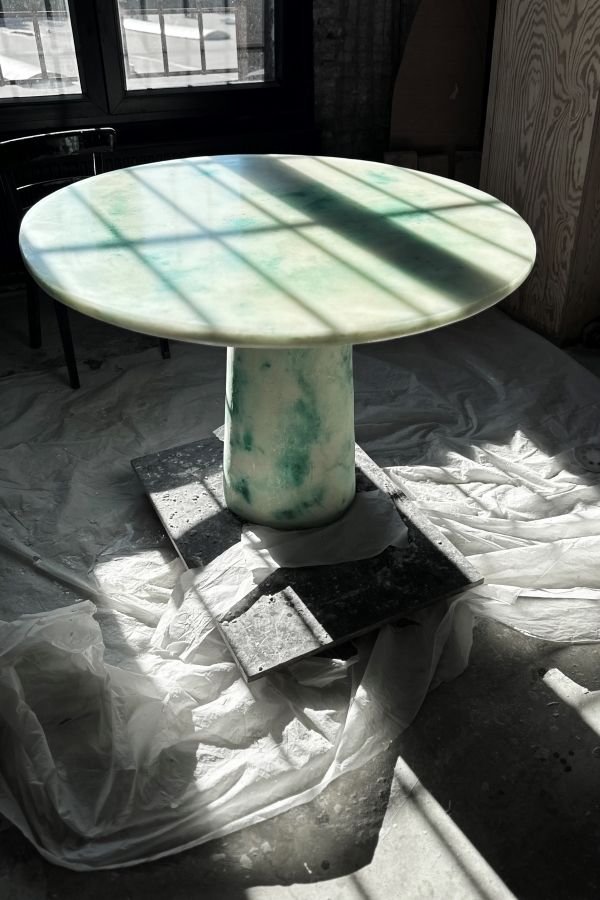
How would you define yourself as a designer?
I am very drawn to the idea of collectible design, which enables us to create unique pieces. All our objects are handmade using a moulding technique. This artisanal dimension is at the heart of our approach.
You trained in Strasbourg, then at the Design Academy in Eindhoven. Tell us about your career path.
While studying graphic design and illustration in Strasbourg (HEAR), I soon came up against the limitations of 2D. What I was missing was the materiality of objects. During the rest of my Product Design course, I spent a lot of time in the workshops where the art students worked. I was less inspired by working on a concept than by the potential of a technique or a material.
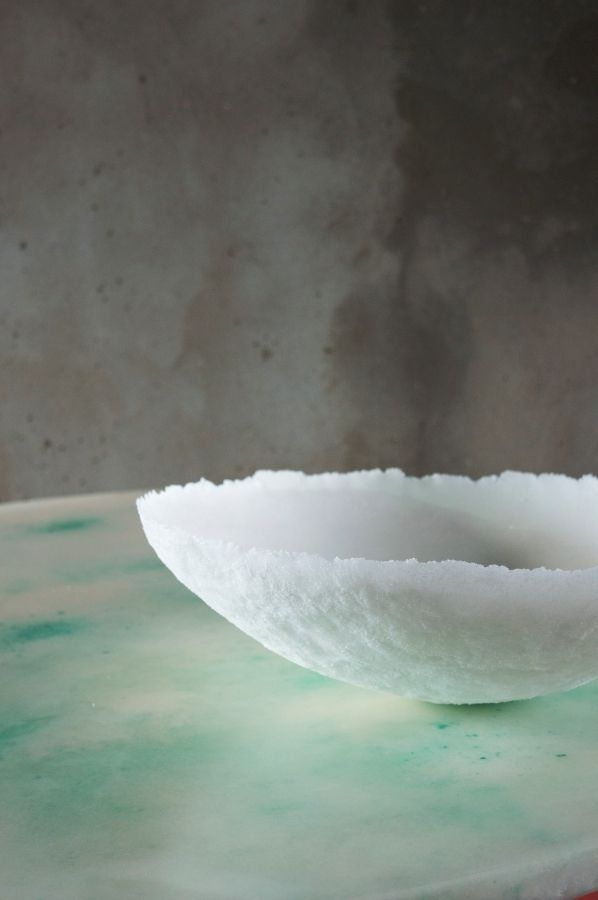
And then there was your encounter with salt, the central material of your design practice: tell us about it.
As part of my Social Design course at the Eindhoven Academy, I had the opportunity to join the Fondation Luma in Arles (France). That’s where I took part in a project involving salt. I studied this material from a historical perspective, but also from the point of view of its chemical properties. From the outset, I was fascinated by its immaculate, snowy appearance. The unique thing about salt is that it was long considered a valuable material (white gold) before falling out of favour. My work consisted of designing precious objects that evoke the beauty of marble. My first pieces were created in 2017. Today, we work on both scenographic projects, which enable us to create very freely, and for architects. In the latter case, we adapt to their desires and needs, both in terms of colours and finishes.
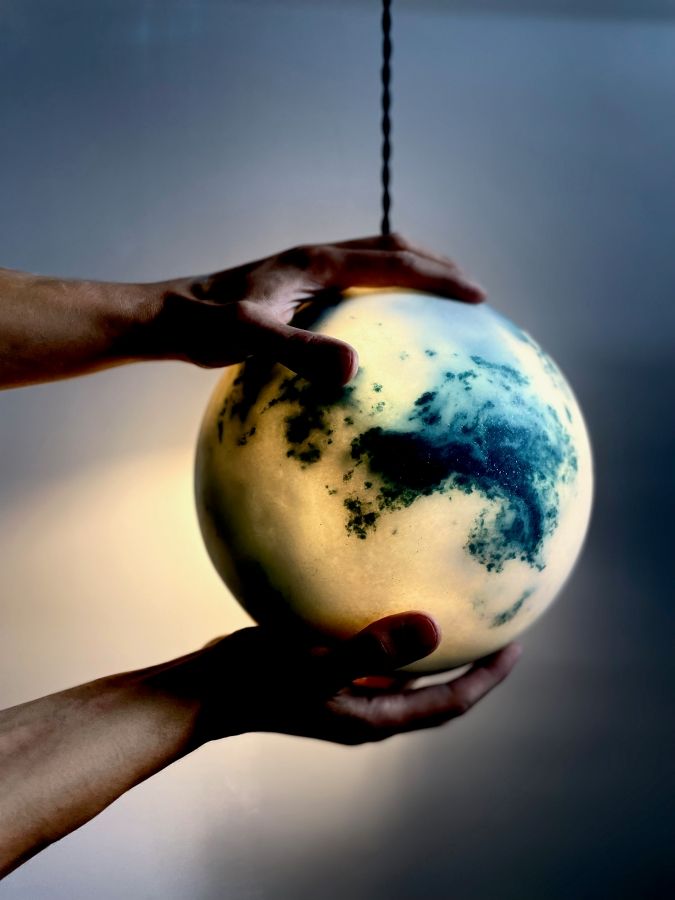
It’s a rather unusual material which, as one might expect, requires a great deal of research. Tell us more.
Given the highly sensitive nature of salt and the diversity of our projects, we are constantly in a phase of development. When we first set up the studio, we mainly created small objects. We then developed tables and lights, which forced us to think in terms of material strength. We are currently working on a bathtub that poses a real technical challenge. Today, in addition to the sculptural objects we design, we want to focus on creating surfaces (walls, worktops, floors, etc.). The power of this material is that it imposes no limits on us, except in terms of infrastructure.
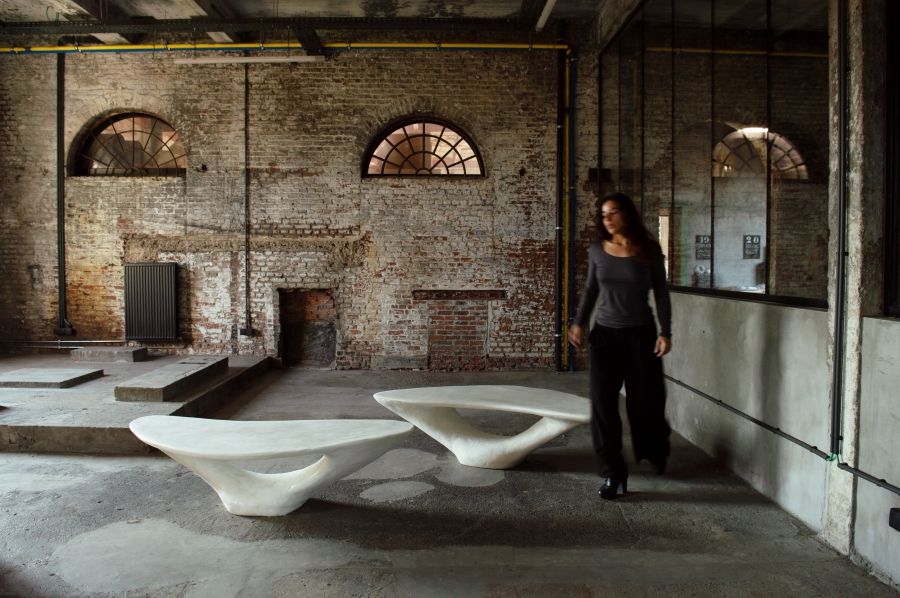
You also like to emphasise its sustainable nature. What is your relationship with this aspect of creation?
When you take a purely plastic and aesthetic approach, I think it’s impossible not to consider things from this angle. In 2025, it makes no sense to manufacture a bathtub from non-recyclable green marble that comes from the other side of the world. Marbled salts, on the other hand, are composed of 90% sea salt and natural binders. The resin coating that protects the objects is also eco-designed.
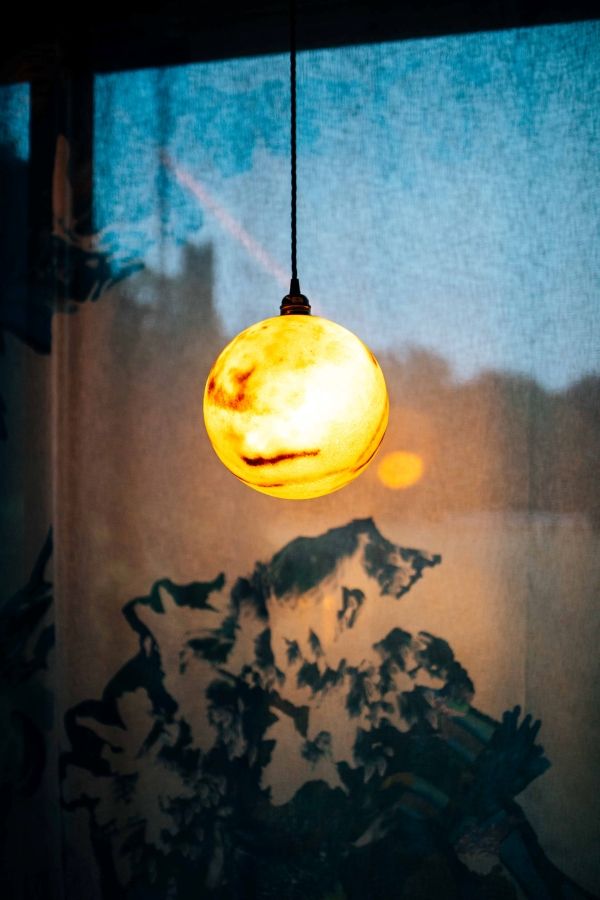
You work at Zaventem Ateliers, the collaborative project led by Lionel Jadot, with whom you also collaborated on the creation of the Mix hotel in Brussels. Is this dynamic a catalyst for new projects?
Lionel and I met at the first Collectible fair in 2018. A year later, I joined Zaventem Ateliers. For the Mix (a hotel located in the former ‘Royale Belge’ buildings, editor’s note), we made 480 lamps entirely by hand. This project enabled us to test our viability in the face of particularly demanding specifications. Alongside the projects we participate in with the other designers in the studio, the group’s collective energy keeps us motivated in the face of the profession’s challenges.
What are they?
I see our profession as a battle, an almost political choice. In a world where everything is produced industrially and where artificial intelligence challenges our position as artists, preserving traditional skills is essential. Halfway between art and craftsmanship, our studio’s work enables us to call the world into question intellectually, but also to promote a culture of work that tends to get lost.
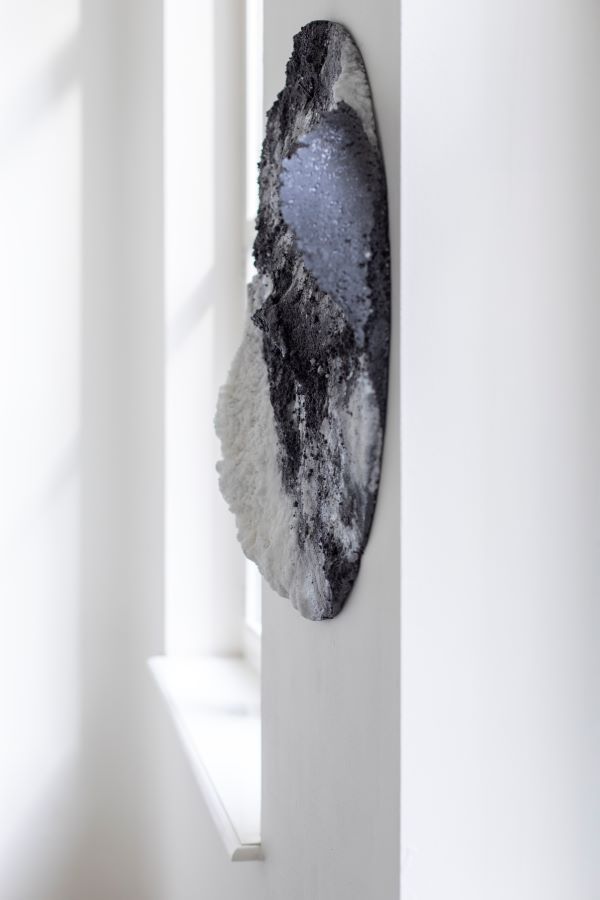
This solo exhibition at the Augusta Gallery is a first; the result of six months of work. How did you envisage it?
It’s a continuation of my thinking as an artist. The material we work with is versatile enough to adapt to the specific features of each project or, where applicable, each location. In the case of Augusta, I am presenting new pieces evocative of aerial landscapes. The interplay of light, one of our trademarks, is expressed in a soft, almost cloudy approach.
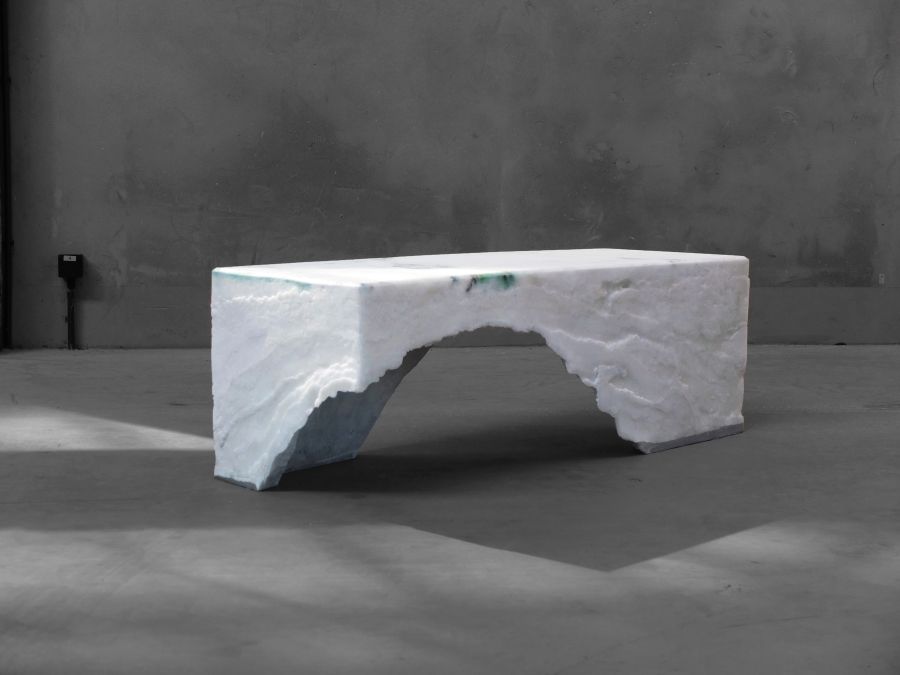
You are fascinated by aerial landscapes. Why?
Salt enables us to reproduce textures that can only be found in the sky. On some of the lamps we have created, you can clearly see the image of a planet. More symbolically, my work evokes travel, but I prefer to let each visitor tell their own story.
Portrait : (c) Lucile Dizier
